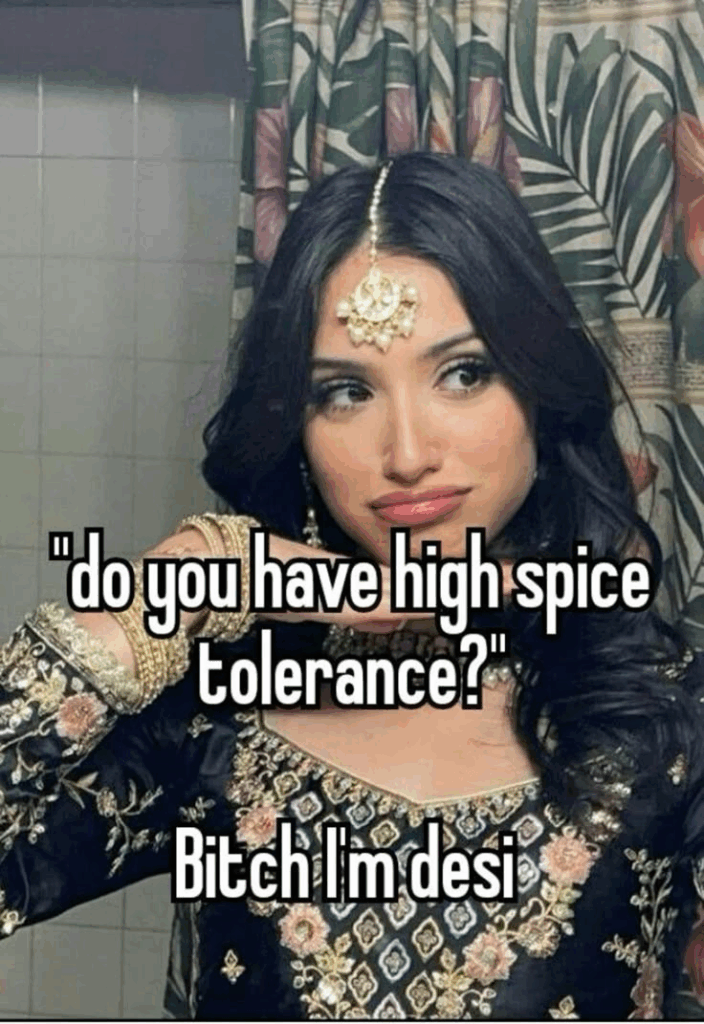

The media has long played a powerful role in shaping how South Asian women are viewed—not just by the world, but by themselves. From Bollywood heroines who embody perfection to Western films that flatten Desi women into stereotypes, the “ideal” South Asian woman is often portrayed as beautiful, docile, graceful, and self-sacrificing. While these portrayals might appear glamorous or harmless, they have a profound impact on how South Asian women experience and express their emotions.
The Beauty Standard Trap

One of the most persistent ideals pushed by media is physical beauty. Fair skin, long hair, delicate features—these have become visual markers of desirability, especially in Bollywood. Even outside Desi culture, South Asian women are often exoticized in similar ways.

Growing up, I was often compared to Aishwarya Rai by my non-Desi friends—not out of admiration, but as a way to point out how I looked “like what they’d seen in Bollywood.” I was also mockingly called Latika, the female lead from Slumdog Millionaire. It wasn’t a compliment. It was a way to stereotype me, reduce me, and mock me for embracing where I came from. They didn’t understand that for me, my heritage wasn’t shameful or foreign. It was mine—and I was proud of it.
But the message was clear: take pride in your roots, and you’ll be ridiculed for not conforming to Western standards. Try too hard to fit in, and you’re erasing who you are. Either way, your emotions don’t quite belong.
The Priyanka Chopra Effect: Representation or Romanticization?

When Priyanka Chopra entered Hollywood, many South Asians celebrated it as a milestone. Finally, a brown woman in the Western spotlight. But the celebration didn’t last long without a sour aftertaste.
Non-Desis suddenly claimed to be her biggest fans—but mostly because she married Nick Jonas. It wasn’t her films, activism, or journey as a global Indian icon that made them notice her. It was her proximity to whiteness that gave her visibility. Once again, a South Asian woman became “relatable” only when tethered to a Western narrative.
This isn’t true cultural appreciation. It’s tokenism. A diluted version of Desi identity, curated for a Western gaze.
The Stereotype Trap: Manjula and Bruce Banner

This shallow representation extends beyond just the “beautiful exotic woman” trope. It seeps into comedy and action films too—often in offensive, reductive ways.
I’ve been compared to Manjula from The Simpsons—a character caricatured with a heavy accent and flat personality. People thought it was funny. It wasn’t. It was lazy writing that reduced Desi women to submissive side characters with no complexity.
Even in The Avengers, there’s that moment when Bruce Banner speaks Hindi to a little girl in a crowded Indian slum. It was meant to be inclusive, maybe even respectful. But instead, it felt performative. That scene is held up by non-Desis as proof of “representation.” For many of us, it just reinforced the stereotype: that Desis exist only in the margins, in poverty, or as an exotic backdrop to white heroism.
That’s not representation. That’s reinforcement of cultural cliché.
Docility as Virtue
Whether it’s Bollywood or Hollywood, the ideal South Asian woman is shown as polite, soft-spoken, and obedient. She’s the good daughter, the loyal wife, the sacrificial mother. She rarely raises her voice, asserts her needs, or shows rage. If she’s hurt, she hides it behind a smile. If she’s angry, she redirects it inward.
This media ideal becomes a blueprint: South Asian women learn early on that expressing strong emotions like anger, sadness, or frustration makes them “too much.” And because these characters are rewarded with love and approval for being passive, many of us internalize that being emotionally honest is a threat to acceptance.
The Western Gaze and the “Othering” of Desi Women
In Western media, Desi women are either invisible or boxed into two categories: the oppressed girl needing rescue or the hypersexualized exotic beauty. Rarely are we seen as layered human beings. Rarely are our emotions shown with the nuance they deserve.
The emotional consequence? Internal confusion. We’re either too loud for our own community or too foreign for others. We’re expected to fit a narrative that was never ours to begin with. When you’ve spent your life being told how you should act and feel to fit into a culturally curated ideal, the natural instinct is to suppress what’s real.
The Cost of Representation Without Complexity
Representation alone isn’t enough if it’s shallow. When media only offers one kind of “ideal” South Asian woman—beautiful, silent, enduring—it teaches the rest of us that anything outside of that mold is wrong. That being bold, angry, messy, assertive, or loud makes us bad daughters, bad partners, or unworthy of love.
That’s why it’s radical—and necessary—for South Asian women to start telling their own stories. To showcase the full spectrum of what it means to be us: the joy, the pain, the conflict, the fire, the complexity.
Redefining What’s “Ideal”
We need characters and stories that show South Asian women being emotionally whole—not just emotionally “controlled.” We need:
- Women who cry and are still strong.
- Women who say no and aren’t villainized.
- Women who don’t look or act like Aishwarya Rai and still matter.
- Women who take pride in their culture without being mocked for it.
- Women whose value isn’t defined by who they marry or how digestible they are to the West.
- And women who aren’t boxed into stereotypes like Manjula, or used as set dressing like in The Avengers—but who live, speak, feel, and lead on their own terms.
In Conclusion
Media is a mirror—but for too long, South Asian women have been shown only a distorted reflection. It’s time to break the glass and build something new. One where we don’t have to choose between being seen and being ourselves. One where our emotions are allowed to exist in their full, raw, unfiltered truth—and be respected for it.
No Responses